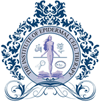|
Regulations & Codes
Lasers Regulations
Laser Regulations in the NewsVirginia lawmakers pass laser hair removal regulationsFebruary 22, 2017New law limits laser hair removal to professionalsJune 30, 2017
VIRGINIA BOARD OF MEDICINE GUIDANCE DOCUMENT
INTRODUCTION Light-based hair removal is and has been available in Virginia in physicians’ practices and, as in other states, in nonmedical settings as well. The Board of Medicine receives a number of inquiries about the modality, usually in the realm of, “Does the Board of Medicine have laws or regulations governing light-based hair removal?” and “Is light-based hair removal considered the practice of medicine?” There have been no Board of Medicine laws or regulations that specifically address light-based hair removal to inform the public, physicians and Board staff about this modality. Given the level of interest and lack of clarity in Virginia and across the nation on this matter, the Board determined that a review of the practice of laser hair removal should be undertaken. To accomplish this, an Ad Hoc Committee on Laser Hair Removal comprised of Board members and stakeholders was appointed to study light-based hair removal as it relates to the practice of medicine, public safety and the Board’s role. CURRENT VIRGINIA LAW There is nothing in Virginia law specific to laser hair removal, the use of lasers or the delegation of authority to use lasers. However, in Section 54.1-2400.01 of the Code of Virginia, there is a definition of laser surgery as follows: As used in this subtitle, "laser surgery" means treatment through revision, destruction, incision or other structural alteration of human tissue using laser technology. Under this definition, the continued use of laser technology solely for nonsurgical purposes of examination and diagnosis shall be permitted for those professions whose licenses permit such use. Additionally, Chapter 29 in Title 54.1 (the Medical Practice Act) has general law about delegation. Found in Section 54.1-2901, there are exceptions to the requirement for a license to practice medicine in (4) and (6) for: …4. Any registered professional nurse, licensed nurse practitioner, graduate laboratory technician or other technical personnel who have been properly trained from rendering care or services within the scope of their usual professional activities which shall include the taking of blood, the giving of intravenous infusions and intravenous injections, and the insertion of tubes when performed under the orders of a person licensed to practice medicine; CURRENT VIRGINIA REGULATIONS Again, there are no Board regulations on the practice of laser hair removal in physician practices, but 18VAC85-20-29 on practitioner responsibility specifies that: A. A practitioner shall not: The foregoing laws and regulations make it quite clear that a licensee of the Board can delegate certain tasks and will be held accountable for the performance by subordinates. What is not clear from the above laws and regulations is whether light-based hair removal is the practice of medicine. MEDICAL OR AESTHETIC? The statutory argument made for light-based hair removal not being considered the practice of medicine is the definition of the practice of medicine in the Code of Virginia. Section 54.1-2900 defines the practice of medicine as: "Practice of medicine or osteopathic medicine" means the prevention, diagnosis and treatment of human physical or mental ailments, conditions, diseases, pain or infirmities by any means or method.” Given that normal hair follicles and normal hairs are the target of services, there appears to be no prevention or diagnosis of pathological conditions involved that would make light-based hair removal the practice of medicine. Misdiagnosis is often used as the argument that these services should be provided by physicians. The most worrisome missed diagnosis would be a malignancy. There are no malignant hairs, but there are some rare follicular tumors. If the practice of medicine involves diagnosis and pathology, and if it is true that pathology requiring diagnosis is rarely encountered in those individuals seeking light-based hair removal services, then the larger issue for patient safety becomes the use of the machine and its potential for patient harm. The energy from the light-based devices penetrates into the dermis and usually temporarily disables the hair follicle. In the hands of inadequately trained personnel, the machine becomes a greater risk factor, so proper training was seen by the committee as the most significant element in ensuring the public’s safety. Just behind training in its impact on patient safety was supervision, and supervision will always be an issue when these services are provided in a physician’s practice. Based on the Committee’s recommendations and further review by the Legislative Committee, the Board adopts the following principles: 1. That the use of intense pulsed light devices solely for the removal of hair does not appear to be the practice of medicine. 2. That the use of light-based devices that involve revision, destruction, incision or other structural alteration of human tissue constitutes laser surgery in accordance with Given these two principles, coupled with the laws and regulations governing physician delegation and responsibility, the Board provides the following guidance. GUIDANCE Physicians who perform or delegate any aspect of light-based hair removal are fully responsible for the provision of such services and should maintain written policies and procedures to include: 1) Training and/or certification for staff involved in hair removal services The written policies and procedures should indicate the level of discretion granted to staff, as well as criteria that necessitated physician involvement. Adopted by the Board of Medicine on February 21, 2008 Go to >> Virginia Dept. of Health Professions |
